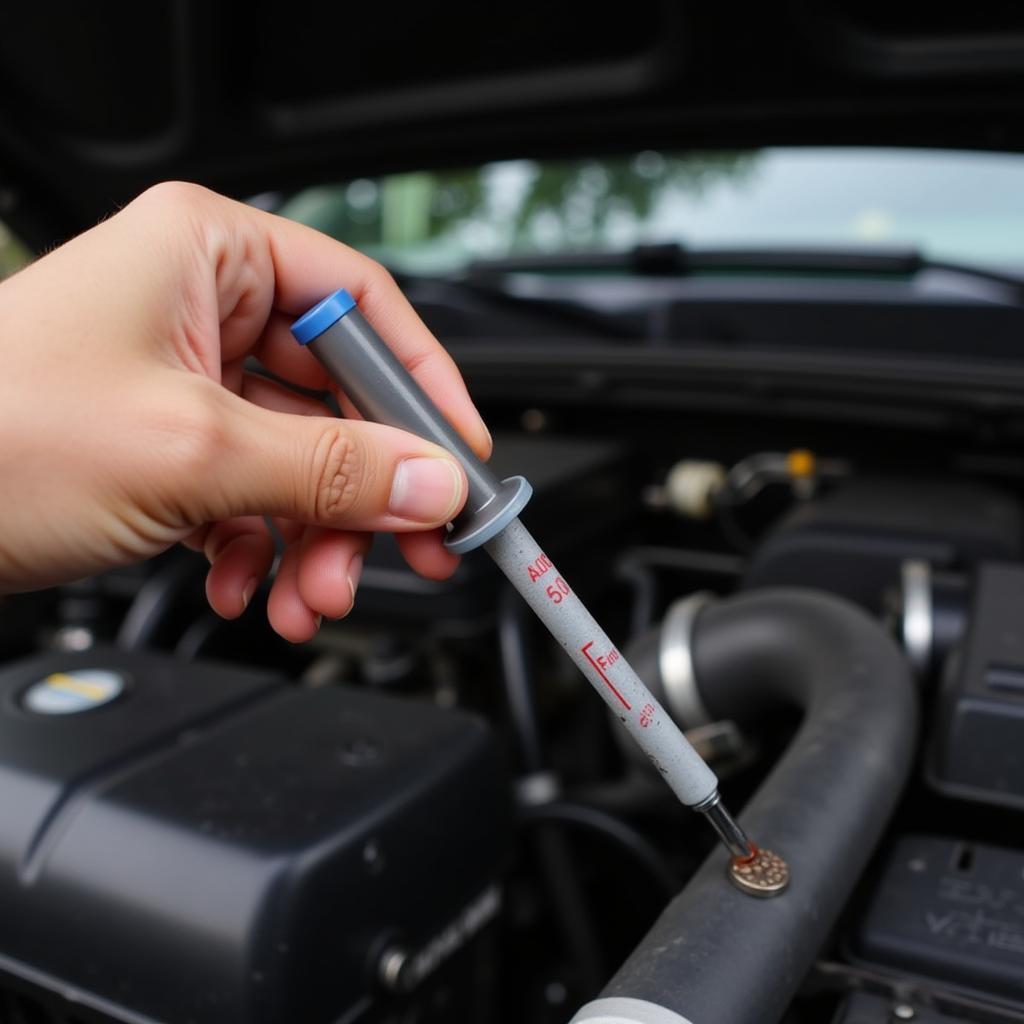A dead 12V socket in your car can be a frustrating experience, especially when you rely on it to power your devices. Often, the culprit behind this inconvenience is a blown fuse. This guide will walk you through everything you need to know about diagnosing and fixing a Car 12v Socket Fuse Problem, empowering you to get your power back online.
Understanding Your Car’s 12V Socket and Fuse System
Before we delve into troubleshooting, it’s helpful to understand how your car’s 12V socket, also known as a cigarette lighter socket or accessory outlet, and its fuse system work.
- 12V Socket: This outlet provides power to various devices, such as phone chargers, GPS units, and portable vacuums. It receives power directly from the car’s battery, usually through a dedicated fuse.
- Fuse: A fuse acts as a safety device. It contains a thin metal strip that melts and breaks the circuit if the current flowing through it exceeds a specific limit. This protects the wiring and prevents potential electrical damage.
Common Causes of a Blown 12V Socket Fuse
Several factors can cause a 12V socket fuse to blow:
- Overloading the Circuit: Plugging in multiple high-power devices simultaneously can overload the circuit, causing the fuse to blow.
- Short Circuit: A short circuit occurs when a live wire comes into contact with a ground wire or a metal component. This can happen if a device plugged into the socket is faulty or if there’s damage to the wiring.
- Faulty Device: Using a malfunctioning device with the 12V socket can cause a sudden surge in current, blowing the fuse.
Troubleshooting a Car 12V Socket Fuse Problem
Follow these steps to diagnose and fix the issue:
-
Locate the Fuse Box: Consult your car’s owner’s manual to find the fuse box location. It’s usually located under the dashboard, in the glove compartment, or under the hood.
-
Identify the 12V Socket Fuse: The fuse box cover typically has a diagram that indicates which fuse corresponds to the 12V socket.
-
Inspect the Fuse: Carefully remove the fuse using a fuse puller or pliers. Examine the metal strip inside the fuse. If it’s broken or melted, the fuse is blown and needs replacement.
-
Replace the Fuse: If the fuse is blown, replace it with a new one of the same amperage rating. The amperage rating is usually printed on the fuse or listed in the owner’s manual.
-
Test the Socket: Insert the new fuse into the fuse box and test the 12V socket by plugging in a device. If the device works, the problem is solved.
If the Fuse Blows Again…
If the new fuse blows immediately or shortly after replacement, there’s likely an underlying electrical issue that requires further investigation:
- Check for Short Circuits: Visually inspect the 12V socket and the wiring for any signs of damage, such as exposed wires or melted plastic.
- Test with a Different Device: Try plugging a different device into the socket to rule out the possibility of a faulty device causing the problem.
- Consult a Mechanic: If you can’t identify the issue, it’s best to seek professional help from a qualified mechanic. They have the expertise and tools to diagnose and repair more complex electrical problems.
“Ignoring a recurring blown 12V socket fuse can lead to more significant electrical problems down the road. Addressing the root cause is crucial for maintaining your car’s electrical system’s health,” advises John Miller, senior automotive electrician at Autotippro.
Tips for Preventing Future Problems
- Avoid Overloading the Socket: Be mindful of the power requirements of the devices you plug into the 12V socket. Avoid using multiple high-power devices simultaneously.
- Use Quality Devices: Always use high-quality devices from reputable manufacturers to minimize the risk of malfunctions that could damage your car’s electrical system.
- Inspect Devices Regularly: Periodically inspect the devices you use with the 12V socket for any signs of damage, such as frayed cords or loose connections.
Conclusion
Troubleshooting a car 12V socket fuse problem can often be a simple DIY fix. However, if the problem persists after following these steps, it’s crucial to seek professional assistance from AutoTipPro. Our team of expert mechanics can diagnose and repair any electrical issue, ensuring your car’s electrical system runs smoothly.
For any car maintenance or repair needs, feel free to contact us at +1 (641) 206-8880 or visit our office located at 500 N St Mary’s St, San Antonio, TX 78205, United States.
We are committed to keeping you safe and your car on the road.






Leave a Reply